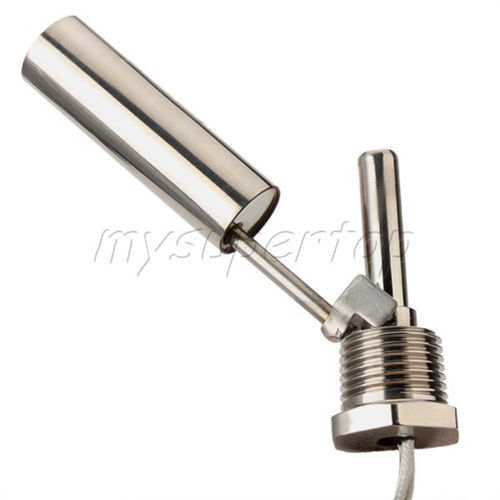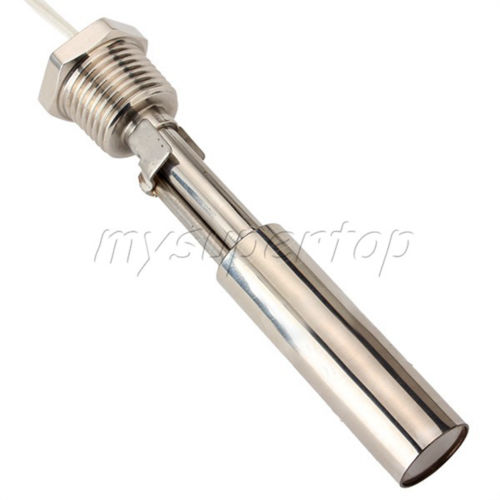Hey everyone,
I bought a couple float switches from China for like $12 each w/ free shipping the other day. The only problem is that I'm really worried about the delicate wires getting ripped out by accident. The switch is unlike many of the float switches you tend to see on the internet; it only has one set of threads (while others will have two, one for entering the kettle, one for outside the kettle). This makes protecting the wire very difficult. I have attached two pictures of the switches.
They are all stainless steel w/ 1/2" NPT threads. I plan to thread this in to a 1/2" female NPT tri clover fitting, and solder on a triclover flange to my HLT and BK. This gives me complete control over its orientation (no problems with the threads tightening when switch is upside down) and makes removal for cleaning very simple. The only problem is that it lacks a strain relief, or anything that would even allow me to connect a strain relief!
The only thing I can think of is to use shrink tubing that will fit over the hex portion, which will alleviate strain from the wires to the fixed nut. Are there any other ideas out there? Ideally I would like to somehow solder on a female QD, but I don't see how I could do that.
Thanks for the help,
Jay


I bought a couple float switches from China for like $12 each w/ free shipping the other day. The only problem is that I'm really worried about the delicate wires getting ripped out by accident. The switch is unlike many of the float switches you tend to see on the internet; it only has one set of threads (while others will have two, one for entering the kettle, one for outside the kettle). This makes protecting the wire very difficult. I have attached two pictures of the switches.
They are all stainless steel w/ 1/2" NPT threads. I plan to thread this in to a 1/2" female NPT tri clover fitting, and solder on a triclover flange to my HLT and BK. This gives me complete control over its orientation (no problems with the threads tightening when switch is upside down) and makes removal for cleaning very simple. The only problem is that it lacks a strain relief, or anything that would even allow me to connect a strain relief!
The only thing I can think of is to use shrink tubing that will fit over the hex portion, which will alleviate strain from the wires to the fixed nut. Are there any other ideas out there? Ideally I would like to somehow solder on a female QD, but I don't see how I could do that.
Thanks for the help,
Jay







